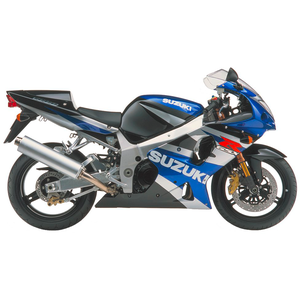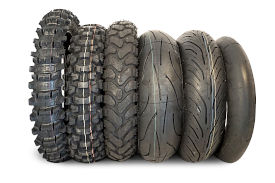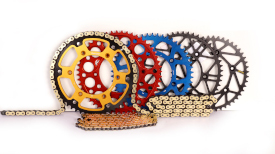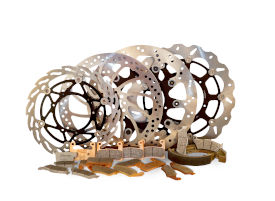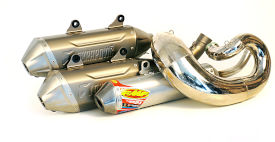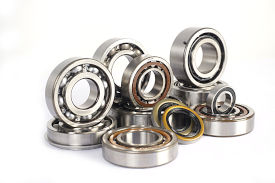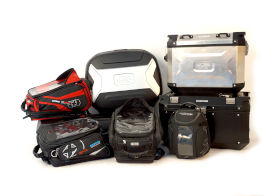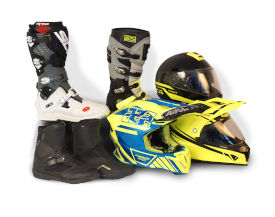Suzuki GSX-R 1000 [2015-2016]: A Timeless Superbike Experience
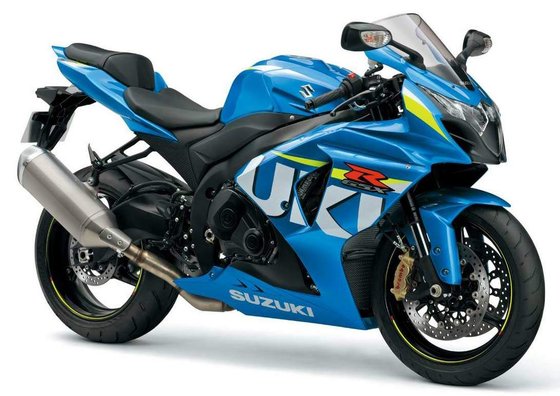
Introduction
The Suzuki GSX-R 1000 has long been a titan in the liter-class sportbike arena, and the 2015-2016 iteration is no exception. Climbing onto this machine feels like strapping into a precision instrument—a blend of raw power and engineering finesse. While newer models have since emerged, this generation remains a benchmark for riders seeking a visceral connection to the road or track. Let’s dissect what makes this GSX-R a standout, even through a modern lens.
Design & Aesthetics: Racing DNA Meets Street Presence
The 2015-2016 GSX-R 1000 wears its MotoGP heritage proudly. The twin-spar aluminum frame, sharp fairings, and aggressive stance scream performance. Suzuki offered this generation in striking color schemes, including the Moto GP Replica (Suzuki Racing Blue) and the 30th Anniversary Edition (Pearl Mira Red/Black or Pearl Vigor Blue/White). The latter commemorated three decades of GSX-R dominance with tank badges and wheel stripes, while the former mirrored the livery of Suzuki’s factory race bikes.
The LED headlight—a first for the GSX-R line—adds a contemporary flair, though its compact design prioritizes aerodynamics over illumination breadth. At 810 mm (31.9 in), the seat height is accessible for average riders, but the sporty ergonomics (low clip-ons, rearset pegs) remind you this is a tool built for speed, not Sunday cruises.
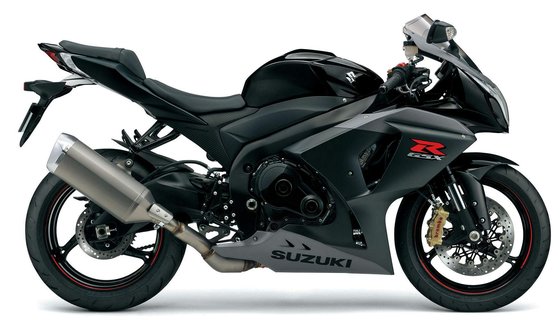
Engine Performance: MotoGP Tech for the Streets
At its heart lies a 999cc inline-four engine producing 185 HP @ 11,500 RPM and 117 Nm (86.3 lb-ft) @ 10,000 RPM. Thumb the starter, and the engine barks to life with a metallic snarl, courtesy of the 4-2-1 exhaust (Yoshimura R11 silencer on special editions). Suzuki’s MotoGP-derived tech shines here:
- Suzuki Racing Variable Valve Timing (SR-VVT): Steel balls in the cam sprocket adjust timing dynamically, optimizing torque at low RPMs and peak power at high revs.
- Finger Follower Valve Train: Lighter than traditional bucket tappets, this allows higher redlines and sharper throttle response.
- Dual Injectors (S-TFI): Secondary top-feed injectors kick in above 8,000 RPM, ensuring seamless power delivery.
The result? A linear surge that pulls hard from 6,000 RPM all the way to the 12,500 RPM redline. Suzuki claims a 0-100 km/h (62 mph) time of 2.8 seconds, and on the road, it feels every bit that urgent. The quickshifter (up/down) is butter-smooth, making aggressive acceleration feel almost effortless.
Handling & Chassis: Precision Meets Adjustability
Suzuki’s twin-spar aluminum frame and Showa suspension strike a balance between track rigidity and street compliance. The Showa Big Piston Forks (BPF) up front and Balance Free Rear Cushion (BFRC Lite) shock absorb bumps without wallowing mid-corner. Adjustability is key: preload, compression, and rebound damping can be tweaked to suit riding styles, whether you’re carving canyons or chasing lap times.
Brembo’s radial-mount Monobloc calipers bite down on 310 mm discs, offering progressive feel and stopping power that’s confidence-inspiring. Paired with Bridgestone Battlax Hypersport tires (120/70-ZR17 front, 190/50-ZR17 rear), the GSX-R carves corners with telepathic feedback. At 203 kg (447 lbs) wet, it’s no featherweight, but the centralized mass makes flicking through chicanes feel intuitive.
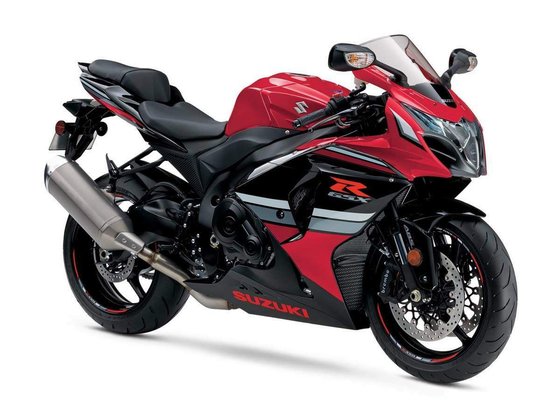
Electronics & Rider Aids: Ahead of Its Time
For a pre-2017 model, the GSX-R’s electronics suite is surprisingly robust:
- 10-Level Traction Control: Adjustable on the fly (via thumb controls) to accommodate rain, street, or track conditions.
- S-DMS (Drive Mode Selector): Three power maps (A, B, C) alter throttle response—Mode A for full aggression, Mode C for slippery surfaces.
- Launch Control: Holds RPM at 8,000 for hole-shot starts, though it’s best reserved for closed courses.
The analog tachometer flanked by an LCD screen provides clear data, including gear position, lap times, and coolant temp. It’s not a TFT dashboard, but it gets the job done without distraction.
Competition: How Does It Stack Up?
In the 2015-2016 era, the GSX-R 1000 faced fierce rivals:
- Yamaha YZF-R1 (2015+): Introduced a crossplane crankshaft and six-axis IMU for superior cornering electronics. The R1 felt more “digital” but lacked the GSX-R’s mid-range grunt.
- Kawasaki Ninja ZX-10R (2016): Boasted 200 HP and advanced electronics (KIBS braking, S-KTRC traction control). Heavier at 206 kg (454 lbs), but a dominant track weapon.
- Honda CBR1000RR (2016): Lighter and more agile, but down on power (176 HP) and dated compared to the Suzuki.
The GSX-R’s strengths? A broader powerband, intuitive electronics, and that iconic Suzuki reliability. Where it lagged was in cutting-edge tech (e.g., IMUs, wheelie control), but for purists, that’s part of its analog charm.
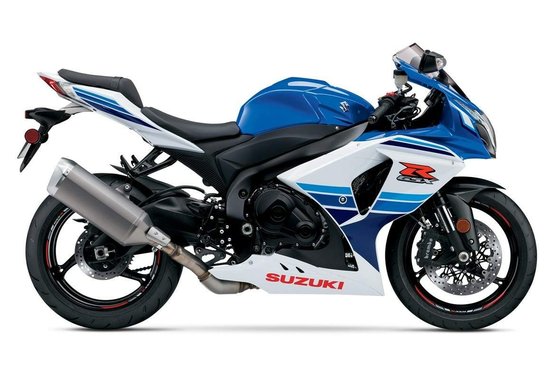
Maintenance: Keeping the Beast Alive
Ownership joy hinges on proper care. Key considerations:
- Oil Changes: Use synthetic 10W-40 every 5,000 km (3,100 mi). The wet sump system simplifies DIY changes.
- Chain Maintenance: The DID50VAZ chain requires regular cleaning and lubrication—upgrade to a premium X-ring chain for longevity.
- Brake Pads: Brembo pads offer excellent bite but wear quickly under track use. Swap in sintered pads for aggressive riding.
- Coolant Flushes: Every 2 years or 20,000 km (12,400 mi). The liquid-cooled system runs hot during spirited rides.
- Valve Inspections: Check every 24,000 km (15,000 mi). Shim-under-bucket design demands precision but ensures long-term durability.
At MOTOPARTS.store, we recommend:
- High-Performance Air Filters: Boost airflow for sharper throttle response.
- Aftermarket Exhausts: Yoshimura or Akrapović systems shed weight and unlock horsepower.
- Adjustable Levers: Personalize reach for improved control.
Conclusion: A Legacy Forged on Asphalt
The 2015-2016 Suzuki GSX-R 1000 isn’t just a motorcycle—it’s a statement. Its combination of accessible power, razor-sharp handling, and race-bred tech ensures it remains relevant years after its debut. While newer bikes dazzle with gadgets, the GSX-R rewards riders who crave authenticity.
Whether you’re resurrecting a garage queen or optimizing a track-day regular, MOTOPARTS.store has the components to keep your GSX-R dominating straights and apexes alike. Own the racetrack. Own the street. Own the legacy.
Specifications sheet
| Engine | |
|---|---|
| Stroke: | Four-stroke |
| Max power: | 135 kW | 181.0 hp |
| Max torque: | 117 Nm |
| Fuel system: | Fuel Injection (SDTV) |
| Lubrication: | Wet sump with oil cooler |
| Max power @: | 11500 rpm |
| Displacement: | 999 ccm |
| Max torque @: | 10000 rpm |
| Bore x stroke: | 74.5 x 57.3 mm (2.9 x 2.3 in) |
| Configuration: | Inline |
| Cooling system: | Liquid |
| Compression ratio: | 12.9:1 |
| Number of cylinders: | 4 |
| Valves per cylinder: | 4 |
| Dimensions | |
|---|---|
| Wheelbase: | 1405 mm (55.3 in) |
| Wet weight: | 203 |
| Seat height: | 810 mm (31.9 in) |
| Overall width: | 705 mm (27.8 in) |
| Overall height: | 1130 mm (44.5 in) |
| Overall length: | 2045 mm (80.5 in) |
| Ground clearance: | 130 mm (5.1 in) |
| Fuel tank capacity: | 17.5 L (4.6 US gal) |
| Drivetrain | |
|---|---|
| Clutch: | Hydraulically-actuated multiplate wet slipper clutch |
| Final drive: | chain |
| Gear ratios: | 1st: 2.562, 2nd: 2.052, 3rd: 1.714, 4th: 1.500, 5th: 1.360, 6th: 1.269 |
| Chain length: | 114 |
| Transmission: | 6-speed constant mesh |
| Electronics | |
|---|---|
| Lighting: | Full LED system |
| Drive modes: | 3 preset maps via S-DMS |
| Quick shifter: | Clutchless up/down |
| Launch control: | Standard |
| Traction control: | 10-level adjustable |
| Maintenance | |
|---|---|
| Rear tire: | 190/50 z-17 |
| Engine oil: | 10W-40 |
| Front tire: | 120/70 z-17 |
| Brake fluid: | DOT 4 |
| Spark plugs: | NGK CR9EIA-9 |
| Spark plug gap: | 0.8 |
| Coolant capacity: | 2.75 |
| Forks oil capacity: | 1.2 |
| Engine oil capacity: | 3.3 |
| Engine oil change interval: | Every 5000 km or 2 years |
| Valve clearance (intake, cold): | 0.10–0.20 mm |
| Valve clearance check interval: | 24,000 km / 15,000 mi |
| Valve clearance (exhaust, cold): | 0.20–0.30 mm |
| Recommended tire pressure (rear): | 2.5 bar (36 psi) solo, 2.8 bar (41 psi) with passenger |
| Recommended tire pressure (front): | 2.25 bar (33 psi) |
| Chassis and Suspension | |
|---|---|
| Rake: | 24° |
| Frame: | Aluminum twin-spar |
| Rear brakes: | Single 220 mm disc, Nissin 1-piston caliper (ABS on some models) |
| Front brakes: | 2 x 310 mm discs, Brembo radial-mount monobloc 4-piston calipers (ABS on some models) |
| Rear suspension: | Showa BFRC Lite link-type monoshock, fully adjustable |
| Front suspension: | Showa BFF inverted telescopic fork, fully adjustable |
| Rear wheel travel: | 130 mm (5.1 in) |
| Front wheel travel: | 120 mm (4.7 in) |



